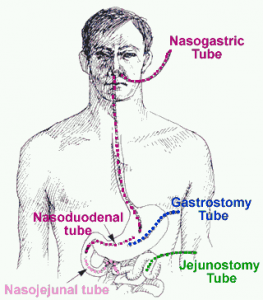Search
Bed Sore Risks Increase With Use of Feeding Tubes
It has been believed for a long time that feeding tubes lowered the risks for developing bedsores in the elderly, but the results of a recent study strongly disagree. According to the study, feeding tubes not only increase the risk, but may in fact contribute to the development of bedsores in elderly patients. What has been revealed is that we need to take a second look at how and when feeding tubes are used and know when to say no when a facility wants to implement the use of one in your loved ones’ care. Pressure sores, commonly referred to as bedsores; occur often in elderly patients with limited mobility that are forced to remain in the same position for a long period of time. The weight on the patients’ joints cuts off the circulation to tissue in the surrounding areas and ultimately results in a painful sore that is open and subject to infection. For a long time, many have believed that feeding tubes help prevent bedsores as well as treat them.
Discomfort Due to Feeding Tubes
Feeding tubes can be extremely agitating to the patient and feed the need for sedation or restraint. If a treatment option requires that your loved one needs to be restrained, you should examine more closely why your loved ones needs such restraint and if there are other options available that do not limit their freedom. Diarrhea and dehydration can also result from the implementation of feeding tubes, which contribute to the development of bedsores and may cause complications to existing bedsores.
Higher Bedsore Rates
After reviewing the results of the study, the difference in the number of patients who developed bedsores while using a feeding tube compared to patients without a feeding tube were staggering. Patients are more than twice as likely to develop a lower stage bedsore with a feeding tube and three times as likely to develop a stage four pressure sore, which can result in infection, septic shock or death. Contrary to the belief that feeding tubes can help with bedsore treatment, the study also found that patients without feeding tubes showed better rates of recovery than those who had them.
New Insight on Care for Patients with Dementia
The results of the study suggest that doctors, caregivers and families of elderly patients with dementia need to consider their options more carefully. While the practice of inserting feeding tubes has been used with the intention of helping the problem, we are finding sadly that they may only be contributing to the problem and causing greater long term complications. Consider all of your options when confronted with the possible use of a feeding tube for your loved one and investigate other treatment options that will not carry the risk of bedsores. Bedsores are not only extremely painful and humiliating to elderly patients, but they can quickly become a serious medical condition. By stage two, a bedsore has become an open wound and as the bedsore progresses to higher stages, the tissue deteriorates down to the bone, in some cases. Infections of the skin, bone, blood and vital organs can occur, possibly even leading to death. If the risk of a treatment option far outweighs the benefit, it is not worth it. We want our loved ones to receive all of the medical care that they need without creating painful or fatal complications in the process. For this reason, we should only allow feeding tubes as a last resort. By limiting their usage, we may be able to successfully reduce the risks for developing bedsores in the elderly and improve their standard of living.
Resources:
http://health.usnews.com/health-news/news/articles/2012/05/14/for-dementia-patients-feeding-tubes-may-increase-bed-sores
 Nursing Home Law News
Nursing Home Law News


